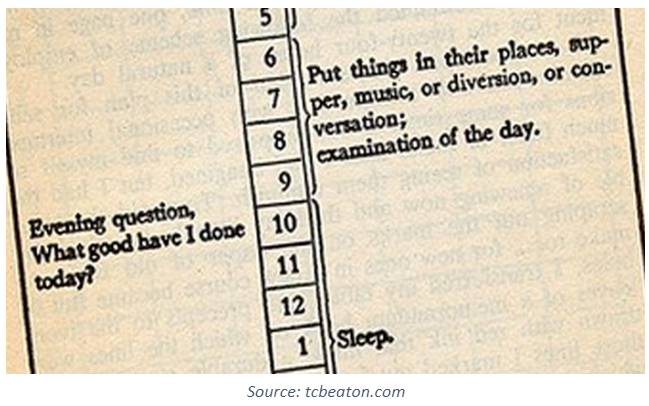The unusual practices of known celebrities
- Camila Simōes
- Jan 10, 2022
- 5 min read

A new year has just begun, and it is usually at this time that we feel most motivated to establish new goals and habits for a better, more fulfilling life.
As such, I thought it would be of interest to talk about the daily routines of some well-known artists and the unconventional and creative aspects that set them apart from others. Most of them will more likely be too unconventional or even impossible for some people, especially those who work 9-5 jobs or are studying, but, hopefully, they will serve as a source of inspiration for those interested in tweaking their lifestyle and trying new practices.
Leonardo da Vinci’s polyphasic sleep routine
Why not start with the craziest routine out of all of them? Da Vinci’s work covered several areas of life, from painting to biology, and with all of these interests, he most certainly must have desired a lifestyle that could provide him maximum productivity. In that way, he ended up developing a schedule that incorporated a polyphasic sleep routine, which divides sleeping time into smaller portions scattered throughout the day. As such, Leonardo’s daily routine consisted of sleeping for 20 minutes every 4 hours, with no longer sleep-time at night.
Da Vinci believed that a structure like this would be able to maximize the amount of time for work and other activities, with nap breaks every four hours to allow for his mind to refresh and sustain his motivation. However, this meant he would only sleep a total of 2 hours per day, which seems like something impossible for anyone to keep up within the long run, and which makes us question whether, perhaps, this was more so a theory he had written down than his actual daily routine. Nevertheless, one good idea that can be extracted from this routine is taking naps and how it might be a good practice to incorporate into our daily routines as a way to refresh our minds and not lose productivity.
Haruki Murakami – the ultimate early bird
Murakami is an internationally renowned Japanese writer, mostly for his novels such as Norwegian Wood (1987) and A Wild Sheep Chase (1982). However, he was only able to find success as a writer once he established a strict and productive daily routine, which involves waking up at 4 am, starting to work write away up till 10 or 11 a.m., going for a 10 km run or a 1500 m swim, and leaving the rest of the day for other activities, going to bed at 9 pm.
This routine will obviously not work for everyone, but it does shed a light on the importance for many people of organising their day and never failing the schedule. As the author explains in an interview for Paris Review, repetition is the key to forming healthy habits and sticking to them, and that a healthy lifestyle requires discipline, as well as mental (and physical) strength.
A.J. Jacobs’ clever tip to avoid sedentarism
American best-selling author and journalist A. J. Jacobs is a father of three whose job involves sitting at a desk and working on a computer. To be able to balance between having a successful career, being a father and maintaining a healthy lifestyle, Jacobs came up with the ingenious idea of working while walking on a treadmill. He wrote an entire book with his laptop on top of the treadmill! This way, not only does it keep him physically active, but it also saves time, and keeps him awake while working.
Moreover, Jacobs has also shared a creative ritual to make the days more fulfilling. Every night, instead of counting sheep until falling asleep, he instead lists everything he is grateful for from that day, alphabetically: “So I’ll start with A and be grateful for, say, the Apple pancakes my sons made me over the weekend. Then I’ll move onto B, and be thankful for Barry, the TV show with the brilliant Henry Winkler. I go on like that – they can be small things, or big things – and I rarely make it to Z. I usually fall asleep around F or G.” (from an interview with the Daily Stoic, 2019).
The importance of work environment for Maya Angelou
Maya Angelou was another morning person, who liked to wake up at 5:30 a.m. However, she didn’t start to work right away. Instead, she preferred to take her time by drinking a cup of coffee with her husband and getting ready to work. But, unlike most other authors, she didn’t work on her writing at home, as she liked to establish a separation between her job and her life at home. As such, she rented a cheap, modest hotel room in which she could work.
Many of the people who have to work at home, such as students, don’t enjoy working at their house either, as it is often a place of distraction and where one does other more relaxing and enjoyable activities, such as sleeping, which altogether can negatively affect their motivation. For Maya Angelou, the solution was to rent a hotel room, but, for someone else, it might be to go to a library or a coffee shop, or somewhere else more peaceful.
Benjamin Franklin’s reflective questions
Benjamin Franklin had also one of the most famous daily routines, which was not very strict and allowed for some flexibility. At 5 am he would wake up and, for the next 3 hours shower, eat breakfast, study a subject of interest and prepare for work, which he would begin at 8. At noon he would have lunch and read, and at 2 pm go back to work for another 4 hours. Finally, at 6, he would finish his work, have some leisure time playing music and socializing, eat dinner, and at 10 he would go to bed.
Besides this, Franklin would ask himself two questions every day: in the morning he would ask “What good shall I do this day?” and in the evening “What good have I done today?”. This is a great practice that Ben Franklin implemented in his life and that everyone else can as well, as a way to add more meaning and purpose to their lives.
Bibliography
Wollacott, Mark. “What Was Leonardo Da Vinci’s Daily Routine?” Mark Wollacott, 16 Dec. 2021, www.mwwollacott.com/what-was-leonardo-da-vincis-daily-routine.
Hao. “Haruki Murakami: Daily Routine.” Balance The Grind, 22 Sept. 2021, www.balancethegrind.co/daily-routines/haruki-murakami-daily-routine.
Wray, John. “Haruki Murakami, The Art of Fiction No. 182.” Paris Review, no. 170, 2004, www.theparisreview.org/interviews/2/the-art-of-fiction-no-182-haruki-murakami.
Clear, James. “The Daily Routines of 12 Famous Writers.” James Clear, 4 Feb. 2020, www.jamesclear.com/daily-routines-writers.
Billy. “Thanks A Thousand: Bestselling Author A.J. Jacobs On Cultivating Gratitude.” Daily Stoic, 28 Jan. 2019, www.dailystoic.com/aj-jacobs-interview.
Nguyen, Vi-An. “What Was Maya Angelou’s Daily Routine?” Parade, AMG/Parade, 28 May 2014, www.parade.com/22790/viannguyen/whats-maya-angelous-daily-routine.
Franklin, Benjamin. The Autobiography of Benjamin Franklin. Edited by Charles Eliot, e-book, Project Gutenberg, 2016. https://www.gutenberg.org/files/148/148-h/148-h.htm.






Comments